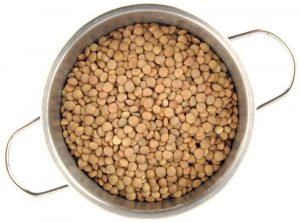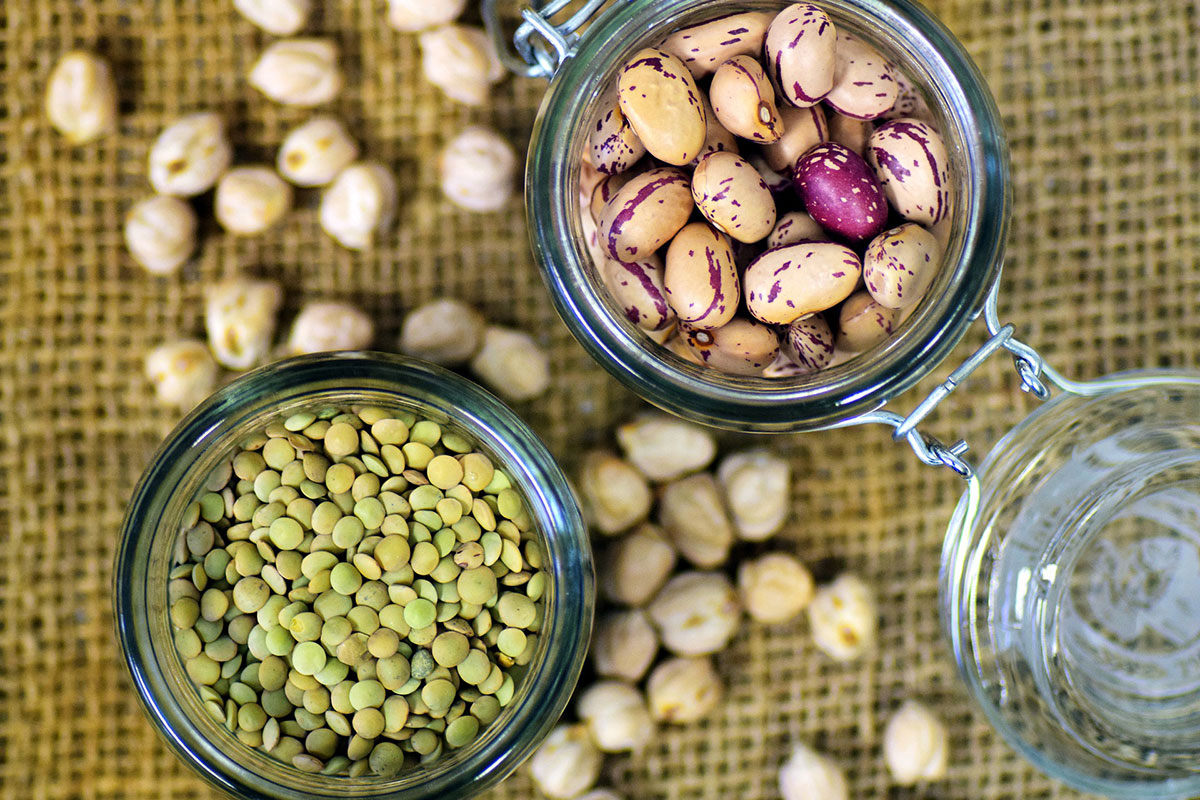
Eat Well! Fall/Winter 2020

A Newsletter for Healthy Eating!
Inside this Issue:
- Featured Article: Dried Beans, Peas and Lentils
- Food Bites: How to Store and Prepare Dried Beans
- Kid’s Korner: Make Your Own Bean Dip
- Ask EFNEP! Rita Stephenson, Washington County
- Food Safety Corner: Planning Ahead for Power Outages
- Eat Well Recipe: Mystery B Bars
 Looking for ways to save money on food?
Looking for ways to save money on food?
The EFNEP newsletter has always given you great ideas on how to save money on food. Now, these ideas are even easier to spot. Look for this picture in the EFNEP newsletter to find great tips to save money on food. SAVE MONEY.
Featured Article:
Dried Beans, Peas and Lentils
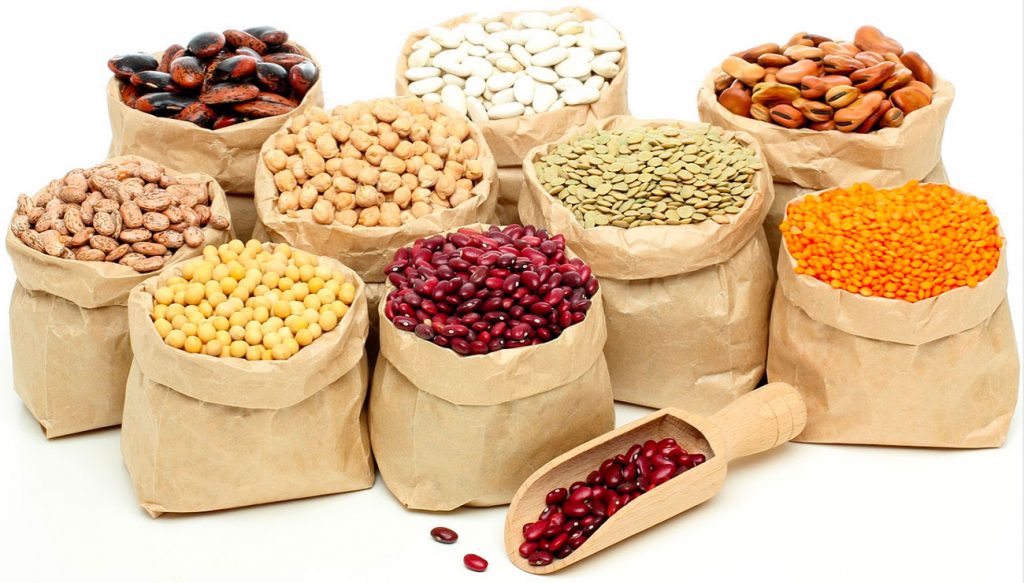 Kate Yerxa, Extension Educator
Kate Yerxa, Extension Educator
Dry beans and peas are the mature forms of legumes such as kidney beans, pinto beans, lima beans, black-eyed peas, and lentils. Legumes have an assortment of shapes and colors depending on the variety.
Some common legume varieties grown in Maine include Yellow Eye, Jacob’s Cattle, Pinto, Soldier, Navy, Black Turtle, and Vermont Cranberry beans. Although beans are an inexpensive plant protein, they are often avoided due to needing a long preparation time. Check out the two soaking techniques in the Food Bites section of this newsletter to find the method that best fits your lifestyle (or try the tips for using canned beans in the Ask EFNEP section of this newsletter.)
Dry beans, peas, and lentils are unique foods that fit in two MyPlate food groups. They can be considered a protein food or as part of the vegetable group. Cooked dry beans contain 100 to 130 calories per half-cup serving and are a nutritional powerhouse. Dry beans contain protein, carbohydrates, fiber, B-vitamins, and minerals such as iron. Dry beans are also very low in fat and naturally sodium and cholesterol-free.
Dry beans are a great source of dietary fiber. A one-half cup serving of cooked dry beans can contain 6 to 8 grams of fiber. Beans also contain soluble fiber that helps lower unhealthy blood cholesterol levels and reduce the risk of heart disease and stroke. To reduce gas, add beans to your diet in small amounts (about ¼ cup at a time) so your body can adjust to the increase in fiber over time.
Most beans can be substituted for one another in recipes, but their cooking time may vary. Below are several types of beans and the types of meals and recipes that they are commonly used in. Cooking times for dried beans can be found in the Food Bites section of this newsletter.
| Type of Bean/Legume | Dishes that Commonly Use the Bean |
|---|---|
| Black Beans | Soups, stews, rice dishes, and Latin American cuisines. |
| Black-Eyed Peas | Salads, casseroles, fritters, and Southern dishes. |
| Chickpeas (garbanzo beans) | Casseroles, hummus, minestrone soup, and Spanish and Indian dishes. |
| Cranberry | Pasta dishes, soups, and stews |
| Great Northern Beans | Baked beans, pasta dishes, and casseroles |
| Jacob’s Cattle | Soups and stew |
| Kidney Beans (dark and light red) | Stews, salads, chili, and rice dishes. |
| Lentils | Soups, stews, salads, side dishes, and Indian dishes. |
| Lima Beans and Butter Beans | Succotash, casseroles, soups, and salads. |
| Navy Beans | Baked beans, pork, and beans, soups and stews |
| Pinto Beans | Refried beans and Mexican dishes |
Source: U.S. Dry Bean Council. Bean Varieties. https://usdrybeans.com/industry/bean-varieties/
Food Bites:
How to Store and Prepare Dried Beans
By Kate Yerxa, Extension Educator
Storage
Store dry beans in a cool, dry place and avoid high temperatures and high humidity to maintain freshness. Store unused dry beans in a resealable plastic bag or tightly covered, non-metal container for up to one year. Store cooked beans in a covered container that is not made from metal in the refrigerator for 3 to 4 days or in the freezer for up to 6 months. Also try storing cooked beans in smaller one to two cup portions, for ease of use in recipes. Unopened canned beans are safe to eat well past the ‘use-by’ or ‘best by’ date as long as the can shows no dents, rust, or swelling. For more information about how long it is safe to store foods, visit the FoodKeeper App.
Preparation
Follow the steps below from the University of Nebraska – Lincoln Extension to soak and cook your beans.
- Spread dry beans on a clean kitchen towel to remove small stones, dirt, damaged, or shriveled beans before cooking.
- Place beans in a strainer and rinse several times under cold running water. Once beans have been sorted and rinsed, they must be soaked before cooking (lentils, split peas, and black-eyed peas do not require soaking) using one of the methods below:
- Hot Soak: Place one pound of dry beans in a large pot with 10 cups of water. Heat to boiling for 2 to 3 minutes. Remove from heat, cover, and let beans soak for 4 hours.
- Quick Soak: Place one pound of dry beans in a large pot with 6 cups of water. Boil for about 2-3 minutes. Remove from heat, cover, and soak for at least 1 hour.
- Overnight Soak: Place one pound of dry beans in a large pot with 10 cups of water. Cover, refrigerate, and soak for 6-8 hours or overnight.
- After beans have soaked, drain and rinse the soaked beans.
- Place rinsed beans in a large pot with 6 cups fresh water and bring beans to a boil. Reduce heat and simmer. Cook beans according to the table below or on the package. Start checking the doneness of beans after about one hour.
When cooking beans, add herbs and spices as desired for added flavor. Do not add salt or acidic ingredients (such as tomatoes) to beans during cooking as it will slow the cooking process. Also, beans may be simmered with other ingredients in a crockpot after they have been cooked and are tender.
One cup of dry beans will expand to two to three cups of cooked beans, and one pound of dry beans (2 cups) will make about six cups of cooked beans. Canned beans are a great substitute for dry beans in recipes. One drained 15 ½ ounce can of beans equals 1 ¾ cup of beans. Remember to rinse and drain canned beans before using to help remove salt.
| Bean | Cooking TIme |
|---|---|
| Black Beans | 1½ – 2 hours |
| Black-Eyed Peas (No soaking required!) |
½ to 1 hour |
| Chickpeas (garbanzo beans) | ½ to 1 hour |
| Cranberry | ¾ to 1 hour |
| Great Northern Beans | ¾ to 1 hour |
| Jacob’s Cattle | 1-2 hours |
| Kidney Beans (dark and light red) |
Dark Red: 1½ to 2 hours Light Red: 1 to 1½ hours |
| Lentils | 1 hour |
| Large Lima Beans (Butter Beans) |
1 to 1½ hours |
| Navy Beans | 1½ to 2 hours |
| Pinto Beans | 1½ to 2 hours |
| Yellow Eye | 1-2 hours |
Source: U.S. Dry Bean Council. Bean Varieties. https://usdrybeans.com/industry/bean-varieties/
 Kid’s Korner:
Kid’s Korner:
Make Your Own Bean Dip
Makes 8 servings | Serving size: 3 tablespoons
Ingredients
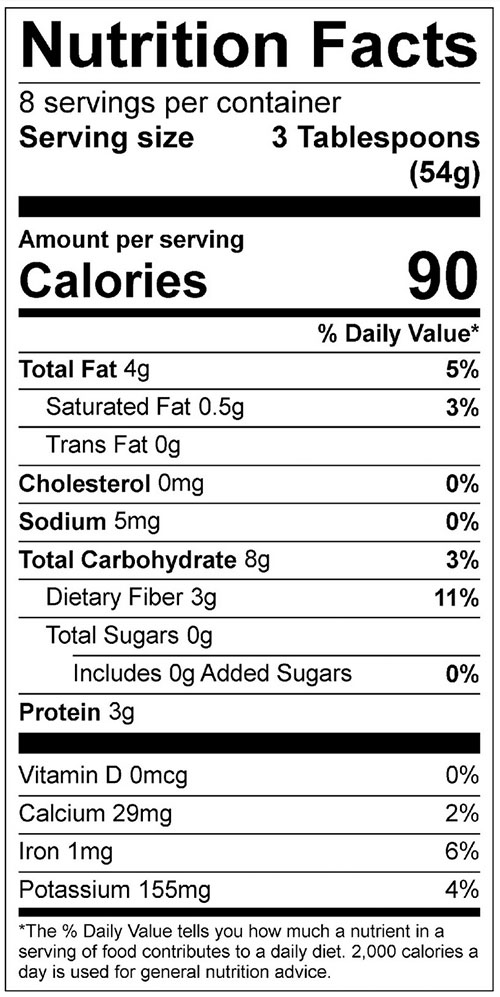 1 can (15.5 ounces) or 1 ¾ cup cooked kidney beans, white beans (great northern or cannellini beans), black beans or chickpeas, drained and rinsed
1 can (15.5 ounces) or 1 ¾ cup cooked kidney beans, white beans (great northern or cannellini beans), black beans or chickpeas, drained and rinsed
2 tablespoons oil
2 teaspoons minced garlic or ¼ teaspoon garlic powder
½ teaspoon chili powder
1 teaspoon ground cumin
1–4 tablespoons water, if needed
Optional: ½ cup nonfat plain yogurt (not included in the nutrition facts label)
Directions
- Blend beans, oil, garlic, chili powder, and cumin in a blender or food processor.
- Blend until smooth. If you do not have a blender, mash the beans and the other ingredients until smooth.
- If the bean mixture is dry, add water 1 tablespoon at a time.
- Once blended, transfer to a small bowl. Optional: Before transferring bean mixture to a bowl, mix in yogurt for a creamier bean dip.
- Store the bean dip in the refrigerator and use within 2–3 days.
Cost
- Cost per recipe (without yogurt): $1.33
- Cost per serving (without yogurt): $ .17
- Cost per recipe (with yogurt): $1.85
- Cost per serving (with yogurt): $ .23
Ask EFNEP!
 Rita Stephenson, Washington County
Rita Stephenson, Washington County
Rita Stephenson has been the Expanded Food and Nutrition Education Program (EFNEP) Community Education Assistant in Washington County for almost two years. She loves that she gets to spend a large part of her time sharing information with children and adults about healthy food and eating. Her favorite part of teaching is getting asked new questions and learning different cooking tips and tricks from participants in her classes. In her spare time, she enjoys spending time with friends and family, trying new foods, and being outdoors.
Q. Can I use canned beans in place of cooked dry beans in recipes?
A. You can definitely use canned beans in place of cooked dry beans. Canned beans are a quicker alternative to using dry beans, which often require soaking overnight and then cooking. To properly use canned beans, drain and rinse them in a colander before substituting them for dry beans in a recipe. This step rinses away any unwanted liquid from the can and reduces the sodium content of the beans. Another way to reduce sodium content in canned beans is to choose cans labeled “low sodium,” “reduced sodium” or “no salt added.” Limiting the amount of sodium in your diet reduces the risk of heart disease and high blood pressure. Overall beans, canned or dried, are a great source of fiber and protein.
Food Safety Corner:
Planning Ahead for Power Outages
By Kathy Savoie, Extension Educator
With winter on its way, we should plan ahead for power outages that are common with snow, wind, and ice storms. Power outages can affect the safety of foods you have stored in your refrigerator and freezer. Bacteria in food grow rapidly between 40 and 140 degrees. Knowing what to do before storms arrive and after power outages occur can minimize your food safety risks.
Steps to prepare for power outages to prevent food spoilage:
- Keep an appliance thermometer in the refrigerator and freezer. An appliance thermometer indicates the temperature in the refrigerator and freezer. In the case of a power outage, it can help determine the safety of your food.
- Make sure your freezer is at 0 degrees or below and the refrigerator is at 40 degrees or below.
- Freeze containers of water ahead of time for ice to help keep food cold in the freezer, refrigerator, or coolers after the power is out. Freeze gel packs for use in coolers.
- Freeze refrigerated items such as leftovers, milk, and fresh meat and poultry that you may not need immediately; this helps keep them at a safe temperature longer.
- Have coolers on hand to keep refrigerated food cold if the power will be out for more than 4 hours.
- Group food together in the freezer; this helps the food stay cold longer.
Steps to follow during the power outage to prevent food spoilage:
- Keep the refrigerator and freezer doors closed as much as possible to maintain the cold temperature.
- Refrigerators will keep food safe for about 4 hours if it is unopened. A full freezer will hold the temperature for approximately 48 hours (24 hours if it is half full) and the door remains closed.
- Discard perishable foods such as meat, poultry, fish, soft cheese, milk, eggs, leftovers, and deli items after they have been in the temperature danger zone of 40 – 140 degrees for four or more hours.
- Food may be safely refrozen if it still contains ice crystals or is at 40 degrees or below when checked with a food thermometer.
- Use dry or block ice to keep your refrigerator and freezer as cold as possible if the power is going to be out for a prolonged period of time.
- If the power has been out for several days, check the temperature of the freezer with an appliance thermometer. If the appliance thermometer reads 40 degrees or below, the food is safe to refreeze.
- If a food still contains ice crystals, the food is safe.
- Do not place perishable food out in the snow. Outside temperatures can vary and food can be exposed to unsanitary conditions and animals. Instead, make ice! Fill containers with water and leave them outside to freeze. Use this ice to help keep food cold in your refrigerator, freezer, or coolers.
- Never taste a food to determine its safety; when in doubt, throw it out!
Adapted from: USDA Food Safety Inspection Service. Keep Your Food Safe During Emergencies: Power Outages, Floods & Fires. 2013.

 Quick and Easy Eat Well Recipe:
Quick and Easy Eat Well Recipe:
Mystery B Bars
Makes 12 servings | Serving size: 1 bar
Ingredients
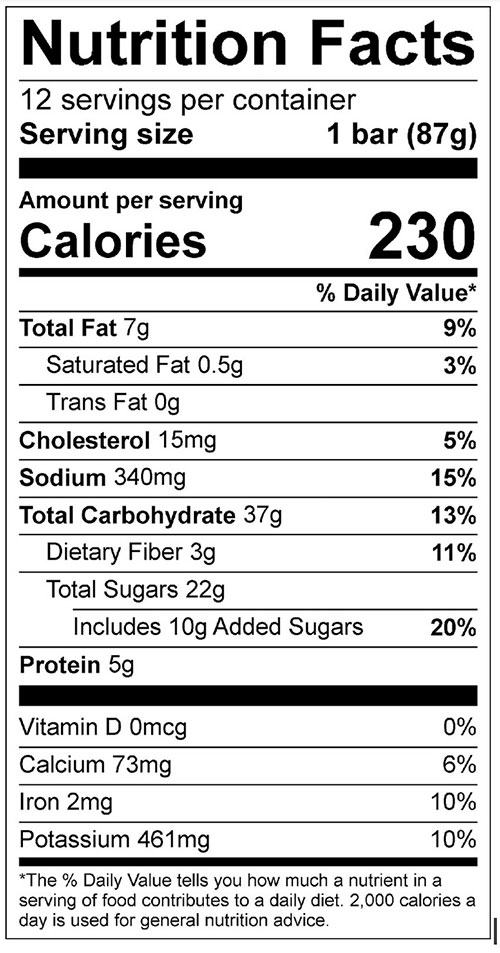 1 ¾ cups cooked beans or 1 can (15.5 oz.) beans (kidney, pinto or navy)
1 ¾ cups cooked beans or 1 can (15.5 oz.) beans (kidney, pinto or navy)
⅓ cup nonfat dry milk
½ cup molasses
½ cup applesauce
1 egg, well beaten (or equivalent egg substitute)
⅓ cup canola oil
1 cup all purpose flour
1 teaspoon baking soda
1 teaspoon cinnamon
1 teaspoon nutmeg
1 cup raisins
Directions
- Preheat oven to 350°F
- Drain and rinse beans. Mash beans into a paste.
- Add other ingredients and stir.
- Bake in a lightly greased 9”x13” pan at 350°F for 30-40 minutes.
- Cool and slice.
Variation: If you like, sprinkle with powdered sugar before slicing.
Cost
- Cost per recipe: $4.41
- Cost per serving: $ .37
The EFNEP newsletter is published two times a year for current, past, and future UMaine Extension Expanded Food and Nutrition Education Program participants. For more information on the EFNEP program, contact your UMaine Extension county office.
Managing Editor: Kate Yerxa, MS, RD
EFNEP Committee: Kathleen Savoie, MS, RD, Extension Educator; Kate Yerxa, MS, RD, Extension Educator; Alex Gayton, MS, RD, Nutrition Education Professional, and Brenda Bracy, Community Education Assistant.
This material was funded by the National Institute for Food and Agriculture’s (NIFA) Expanded Food and Nutrition Education Program (EFNEP).
Information in this publication is provided purely for educational purposes. No responsibility is assumed for any problems associated with the use of products or services mentioned. No endorsement of products or companies is intended, nor is criticism of unnamed products or companies implied.
© 2020
The University of Maine is an EEO/AA employer and does not discriminate on the grounds of race, color, religion, sex, sexual orientation, transgender status, gender expression, national origin, citizenship status, age, disability, genetic information or veteran’s status in employment, education, and all other programs and activities. The following person has been designated to handle inquiries regarding non-discrimination policies: Director of Equal Opportunity, 101 North Stevens Hall, University of Maine, Orono, ME 04469-5754, 207.581.1226, TTY 711 (Maine Relay System).

